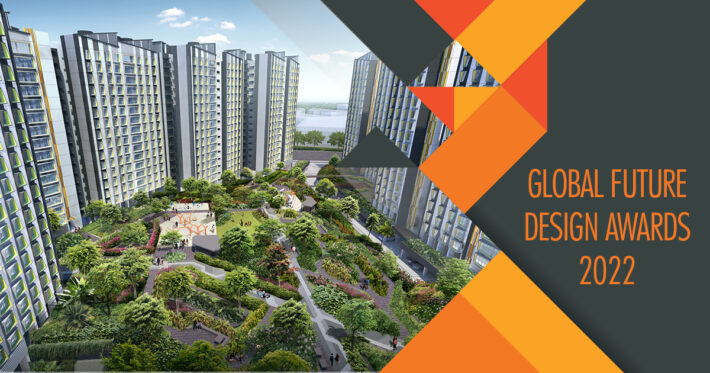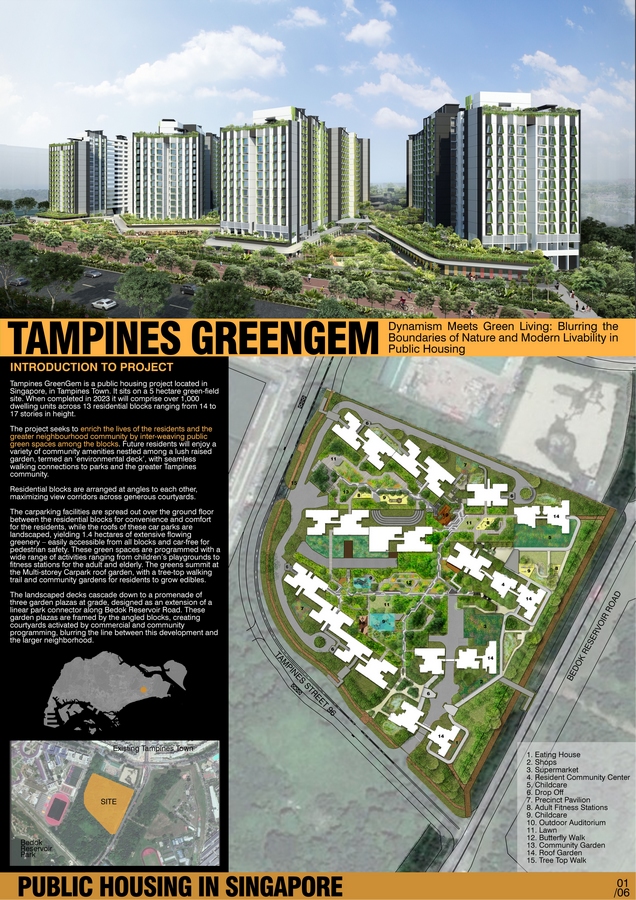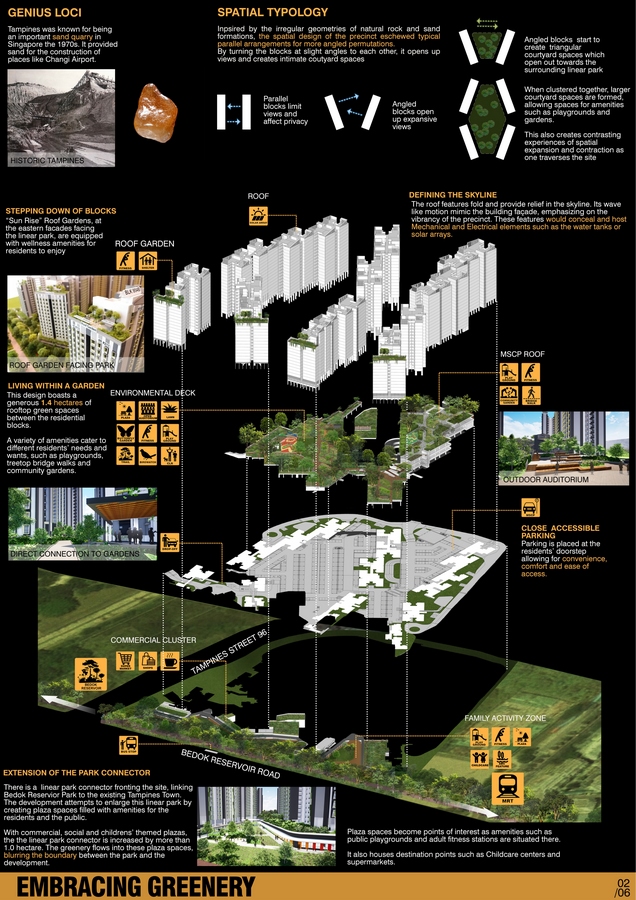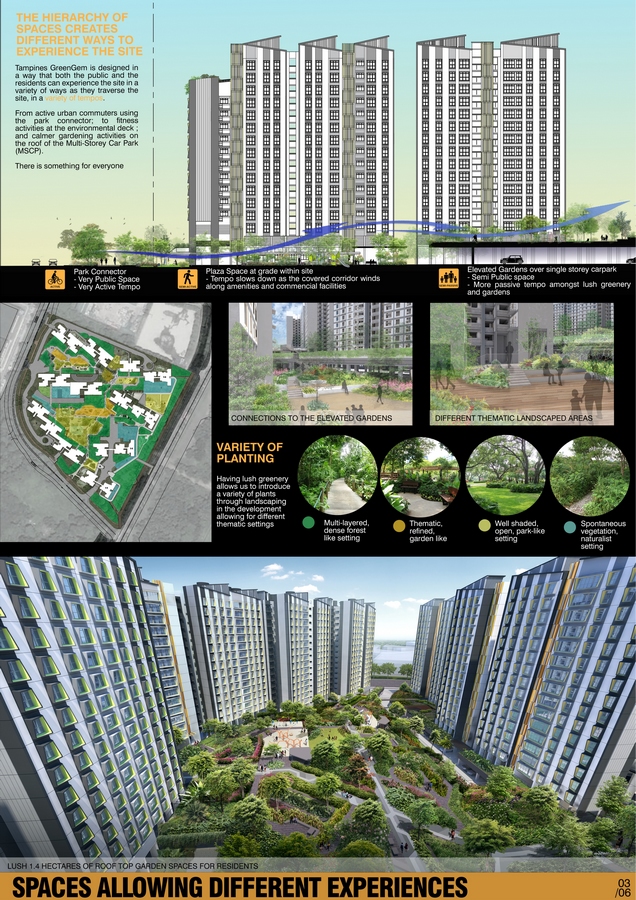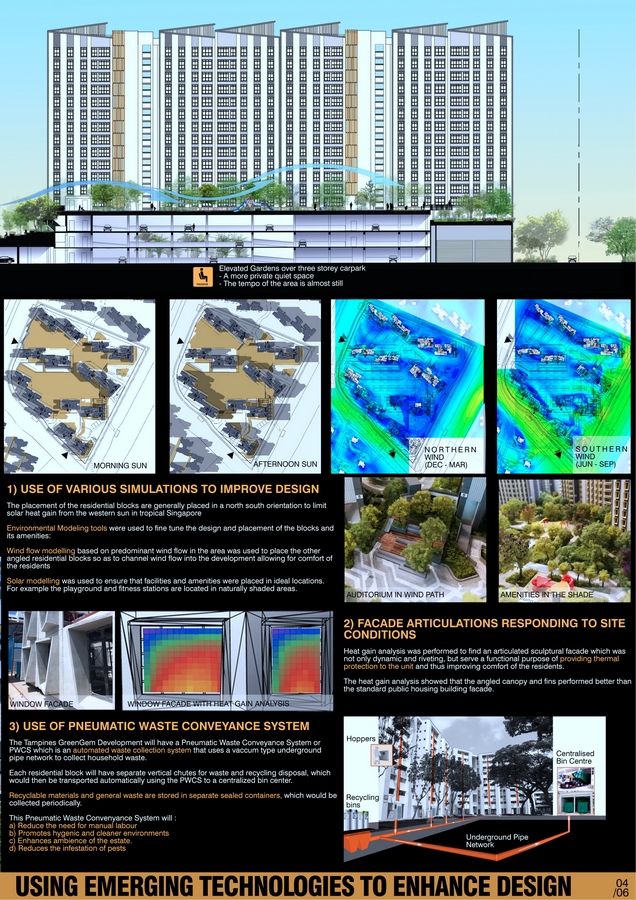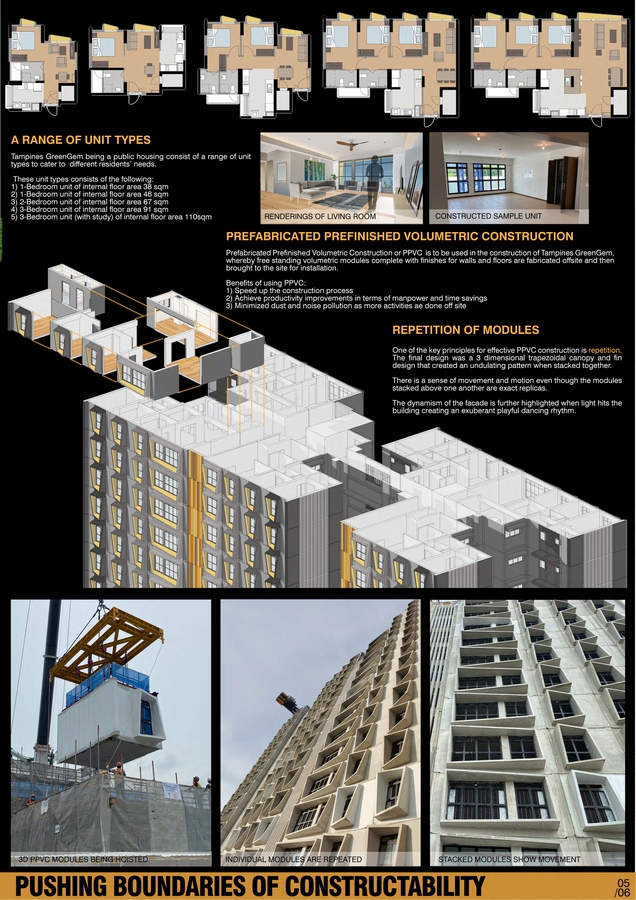Tampines GreenGem is a public housing project located in Singapore developed in house by the Housing & Development Board of Singapore which is a government statutory board.
Global Future Design Awards 2023: Entries Open!
Silver 🏆 Winner
Global Future Design Awards 2022
Tampines GreenGem
Residential High-Rise (Under Construction)
Firm
Housing & Development Board, Building & Research Institute
Architect/Designer
Chia Yu Hsien
Design Team
Dr Johnny Wong, Tan Sze Tiong, Yeo Hock Chai, Wan Khin Wai, Chua Kok Seng, Roy Yap, Tan Kok Koon, Leonard Cai, Nigel Wong, Xu Jing Yi, Liu Qiao Xia
Location
Tampines, Singapore
Country
Singapore
Photographer/Copyright
©Housing & Development Board
Construction of this project started in 2019 and is slated for completion in the third quarter of 2023. When completed it will feature 1086 residential units of various sizes to cater to different future residents’ needs in 13 residential blocks. Apart from residential units, the development will have commercial elements of a supermarket, shops and an eating house. It also will feature family related facilities such as a childcare centre.
The site is located in Singapore in the residential township of Tampines. The area of the development is approximately 5.09 hectares and is bounded by Bedok Reservoir Road and Tampines Street 96 to the east and west of the site respectively. A linear park connector running along the length of the development fronting Bedok Reservoir Road, connects the existing Tampines Town to the 88- hectare public park, Bedok Reservoir Park. This linear park connector is expected to be a bustling pedestrian axis. The initial thought in design of the project was to leverage on this linear park connector to create pockets of spaces within the Tampines GreenGem project, blurring the boundary between the park connector and the development. The result increased the linear park by one hectare. Apart from greenery, commercial and family life facilities were added in these pockets of spaces to make them points of interest bring “life” into these spaces.
These green foyers lead to outdoor landscaped steps which lead upwards to
elevated courtyard gardens above the carparking areas. These elevated green spaces amount to 1.4 hectares in size and are filled with additional amenities and facilities such as play areas, adult fitness stations, walking trails, lawn spaces, an open amphitheatre and community gardening plots. These elevated gardens can be accessed from multiple staircases from grade and from the individual residential blocks. By elevating the landscape, it allows the space to be fully pedestrianized allowing residents and the public to traverse throughout the developments free from any vehicular traffic.
The residential blocks were generally orientated in a north-south orientation to limit solar heat gain from the western tropical sun. The blocks were then angled away from one another to create the spaces for the greenery among the block and open up the views for the future residents. Emerging technologies were used to improve the design of the development such as wind flow modelling which resulted in the shifting of some of the blocks in design stage to allow for better wind flow. Solar modelling was used to ensure that facilities and amenities were placed in ideal locations. For example the playgrounds and fitness stations are located to take advantage of the shade cast by the buildings in the afternoons and evenings.
Prefabricated Prefinished Volumetric Construction or PPVC is utilized in the construction of the residential blocks whereby 3 dimensional modules are fabricated off-site and then brought to site for installation. This construction method speeds up the construction process, achieves productivity improvements in terms of manpower and time savings, and minimizes dust and noise pollution as more activities are done off-site.
To fully reap the benefits of Prefabricated Prefinished Volumetric Construction, repetition of the modules is encouraged. The final design was a 3-dimensional trapezoidal canopy and fin design that had movement and vibrancy within the module itself, and when repeated, creates a fagade that undulates and changes with light and shadows.
The sculptural fagade articulation of the residential blocks in Tampines GreenGem serve not only an aesthetic design but also a functional purpose where the canopies and fins are utilised to reduce thermal solar heat gain within the units. In a push to have a more ecologically conscientious mindset, the development also features the following green initiatives:
- a) Separate chutes for recyclable waste
- b) Motion sensor-controlled energy efficient lighting at staircases to reduce
energy consumption - c) Regenerative lifts to reduce energy consumption
- d) Eco-pedestals in bathrooms to encourage water conservation
- e) Bicycle stands to encourage cycling as an environmentally friendly form of
transport - f) Parking spaces to facilitate car – sharing schemes
- g) Use of sustainable and recycled products in the development
- h) Bioretention swales to naturally clean rainwater and beautify the
landscapes - i) Pneumatic Waste Conveyance System to provide cleaner waste disposal
The Tampines GreenGem project was developed with people in mind, not only its future residents but the wider community. It tries to rethink what public housing can be and how it can enrich the lives of those interacting with it.


